► CAR’s latest Hyundai Ioniq 5 review
► Spaceship looks, cutting-edge powertrain
► This should be on your EV shortlist
The Hyundai Ioniq 5 is one of our favourite electric cars to recommend, even a couple of years after launch. It still looks as sci-fi cool as when it first arrived in 2021 – like a concept car that broke out of the motor show hall stand.
The Ioniq sub-brand is shorthand for the Koreans’ EV movement and the choice of models has been fettled for 2023. There’s a new range-topping Namsan Edition with a smattering of extra equipment, a bigger battery for more range and a juggling of spec levels across the board.
Keep reading for our full Hyundai Ioniq 5 review on one of the best-looking EVs on sale in 2023.
It’s certainly a looker!
Indeed it is. Hyundai says the design was inspired by the Pony Coupe of the 1970s but, unlike so many car brands looking to the past to guide their future, design-wise the Ioniq 5 is no slavish pastiche. Instead, we find an eye-popping piece of styling, shaped as a supersized family hatch, with crisp lines, surprising dimensions and modish pixelated lighting front and rear for a retro-modern vibe.
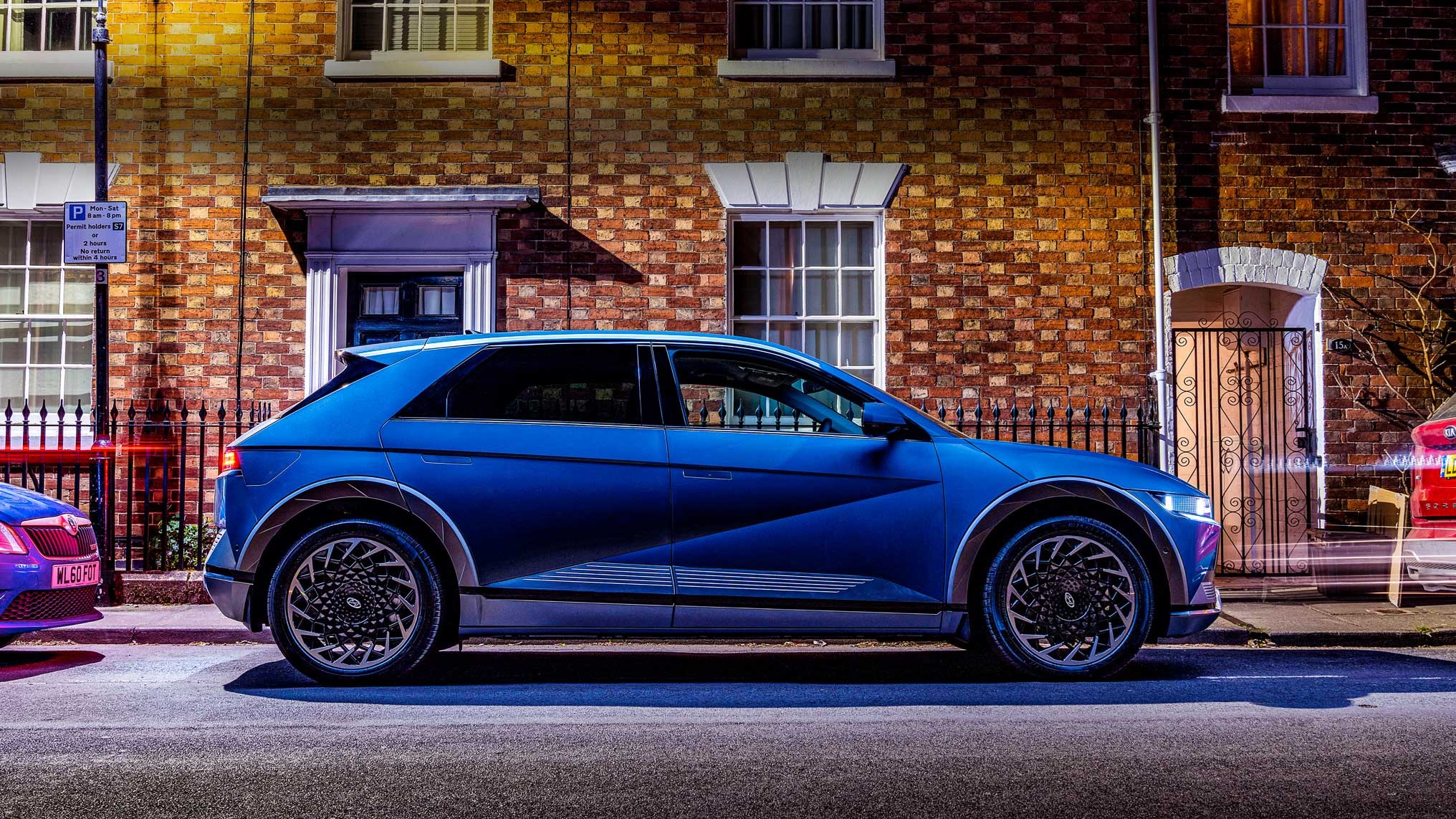
The Ioniq 5’s dimensions are much larger than you think from the photos. This design masterstroke masks the car’s size: it’s actually longer than a VW ID.4 both physically, about 40mm taller than a Jaguar i-Pace and boasts an unusually long wheelbase for extra cabin space inside.
Speaking of the i-Pace and ID range, we conveniently managed to park next to Jag’s EV and an ID.3 during our road tests – both look instantly dated compared to this.
What is it like to live with an EV? Owners reveal all
Inside, the cockpit takes full advantage of the e-GMP platform that lies underneath (it’s the same hardware that underpins the excellent Kia EV6 sister car). A flat floor means no fixed centre tunnel, with a movable centre console that provides cupholders, cubbies and a wireless phone charger. You’re also greeted by thick padded seats, two massive screens and a kitsch two-spoke wheel like the helm of a Honda E’s.
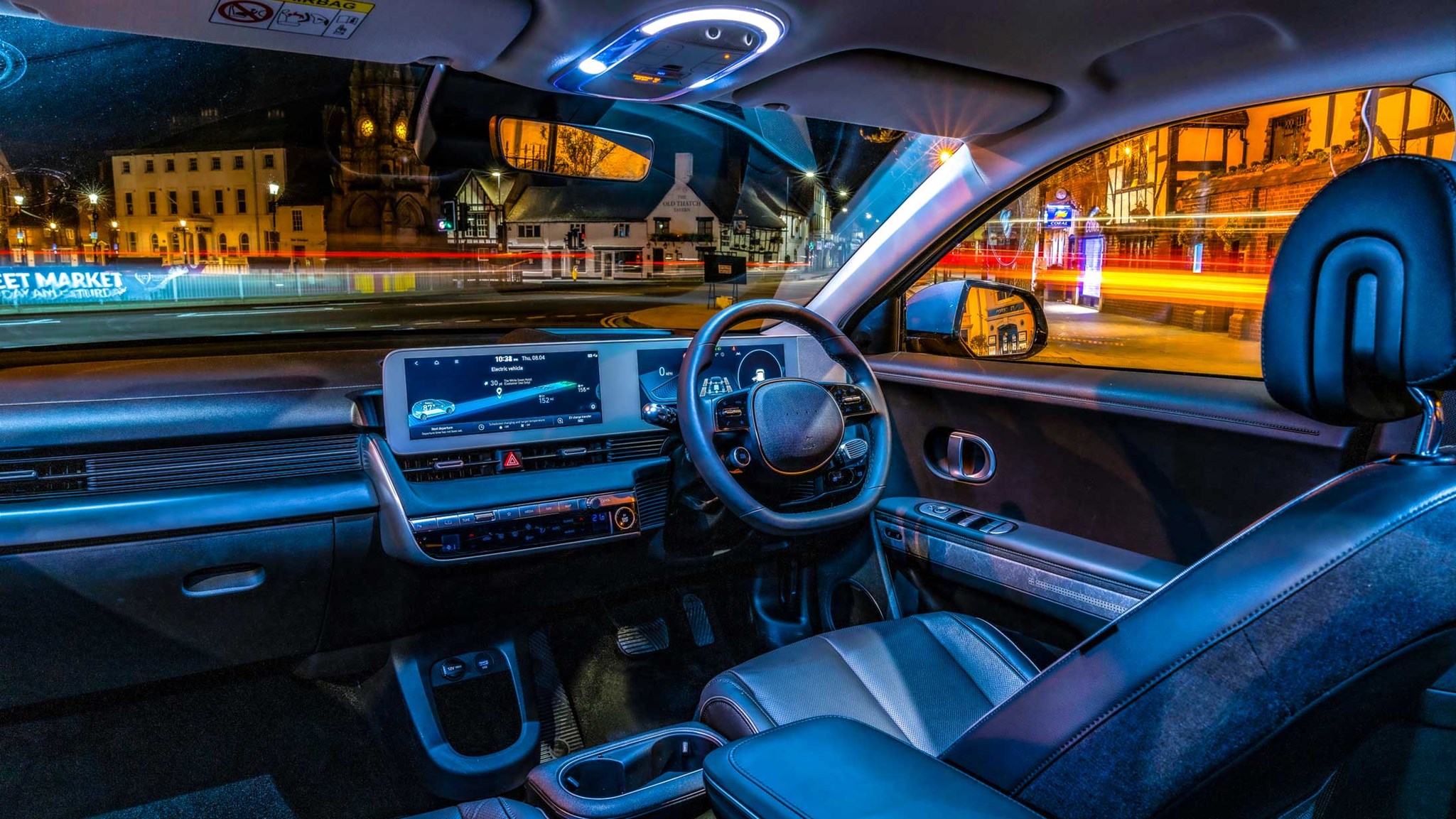
Thankfully, Hyundai hasn’t gone overtly techy in the 5’s interior design like Mercedes, or ultra-minimalist like a Tesla Model 3 – there’s a balance between large, useful screens, touch panels and physical switchgear and solid materials on all your regular touch points.
The gearshift stalk, for example, is on the steering column, with a simple-to-use, chunky twist action to select gear. And the door inlays – complete with eco-friendly paper inserts – feel solid with a tactile thunk when you pull the door handles.
It’s a lovely cabin that feels special without overwhelming you. The new-for-2023 Namsan Edition adds a panoramic glass sunroof with a ‘hand-clap’ blind. It’s a neat addition, bathing the cabin in a soft, diffuse light.
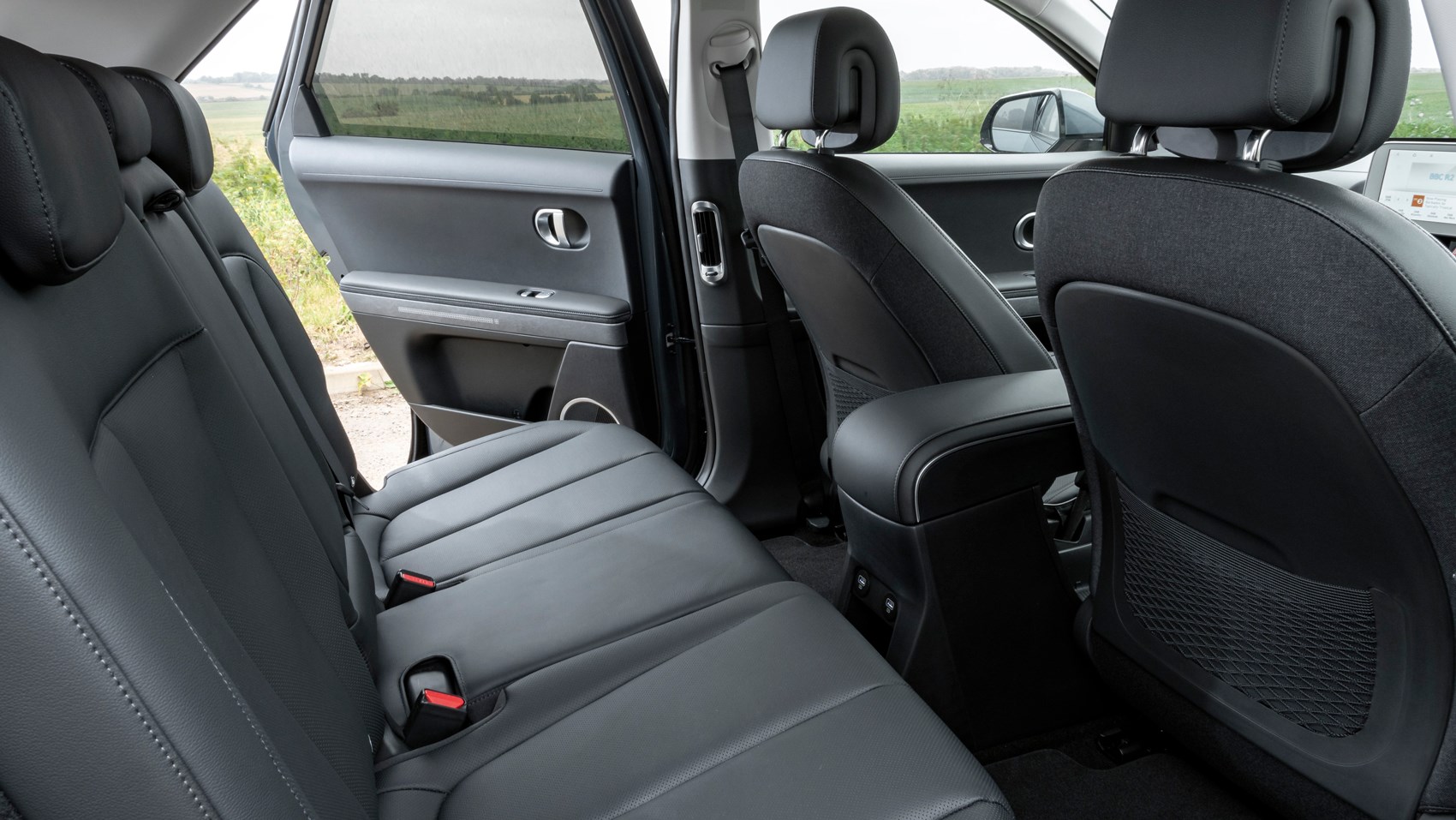
Space is impressive, too. The cabin feels huge once you’re inside, with loads of room for rear passengers, too. The rear bench can slide forward and back and, even with a 6ft 2in driver like myself at the wheel, there’s tonnes of legroom.
The 527-litre boot, however, is rather shallow, but has a decent depth width to load all the accoutrements of family life. You don’t even need to store your charging cables here – there’s a handy storage box under the bonnet (or ‘frunk’) for that.
Any clever technology on the Ioniq 5?
Let’s start with the platform. The new e-GMP architecture will underpin every new Ioniq sub-brand model from Hyundai (along with new EVs from Kia and Genesis). Rear- and all-wheel drive powertrains are offered, with the Ioniq 5 giving you a choice of a standard range 58kWh or long-range 77kWh battery packs (up from smaller-capacity 72.6kWh cells on earlier versions).
The Ioniq 5 is therefore a distant (and cheaper) cousin of the Kia EV6, whose review you can read here.
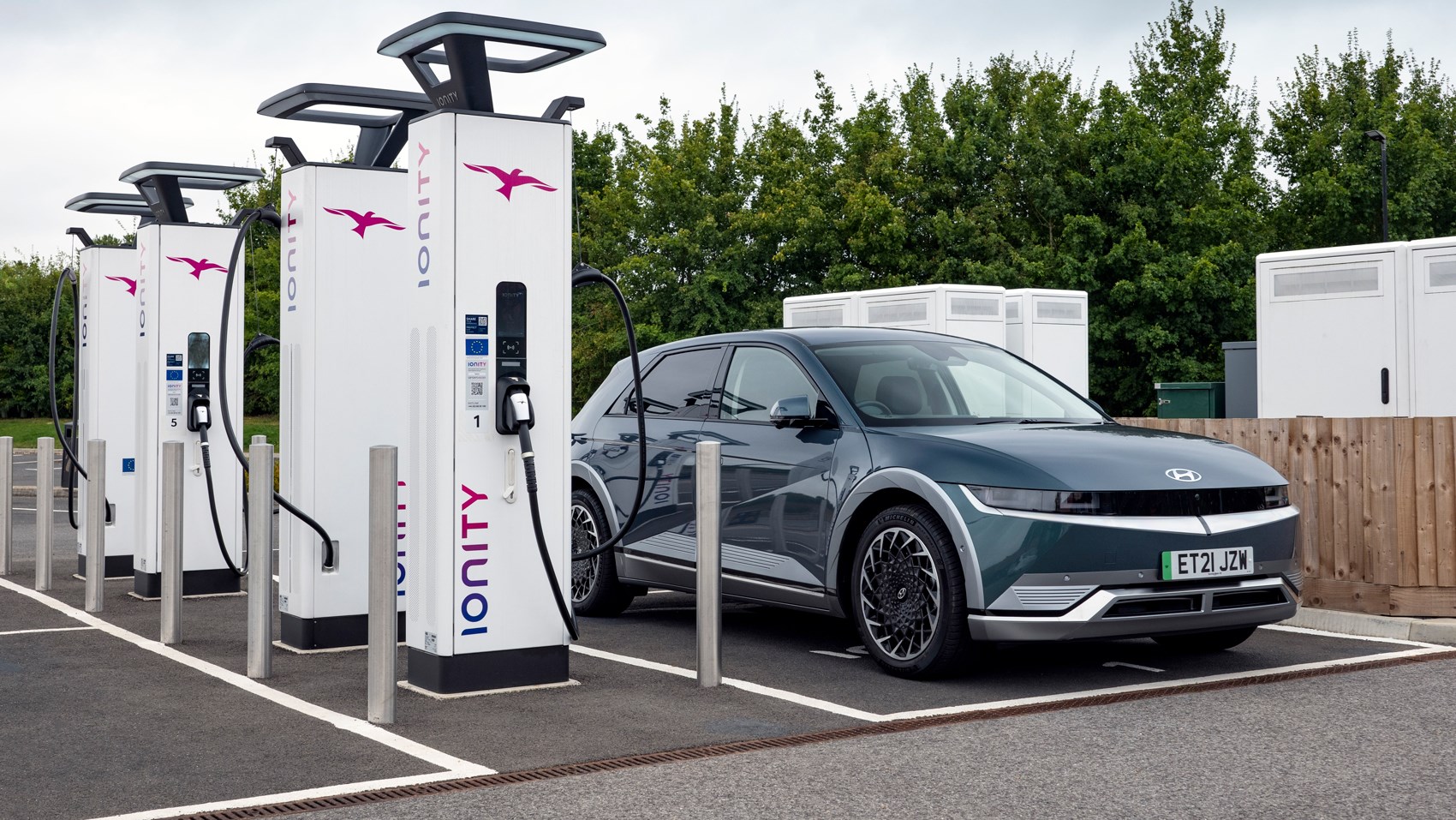
The tech underpinning the Ioniq 5 is as clever as a Porsche Taycan’s, allowing for both 400 or 800-volt charging, meaning (on the UK’s fastest available 350kW chargers, like the Ionity units above) the ability to zap from 10 to 80 per cent charge in just 18 minutes.
Electric range: how far will the Ioniq 5 go on one charge?
Hyundai claims 315 miles in the thriftiest setting (larger battery, rear-wheel drive spec – previously 296 miles with the 72.6kWh battery), but you can expect an ID.3 rivalling 260-plus from the all-wheel drive variant.
Pick the smaller 58kWh battery and the EV range shrinks to 238 miles.
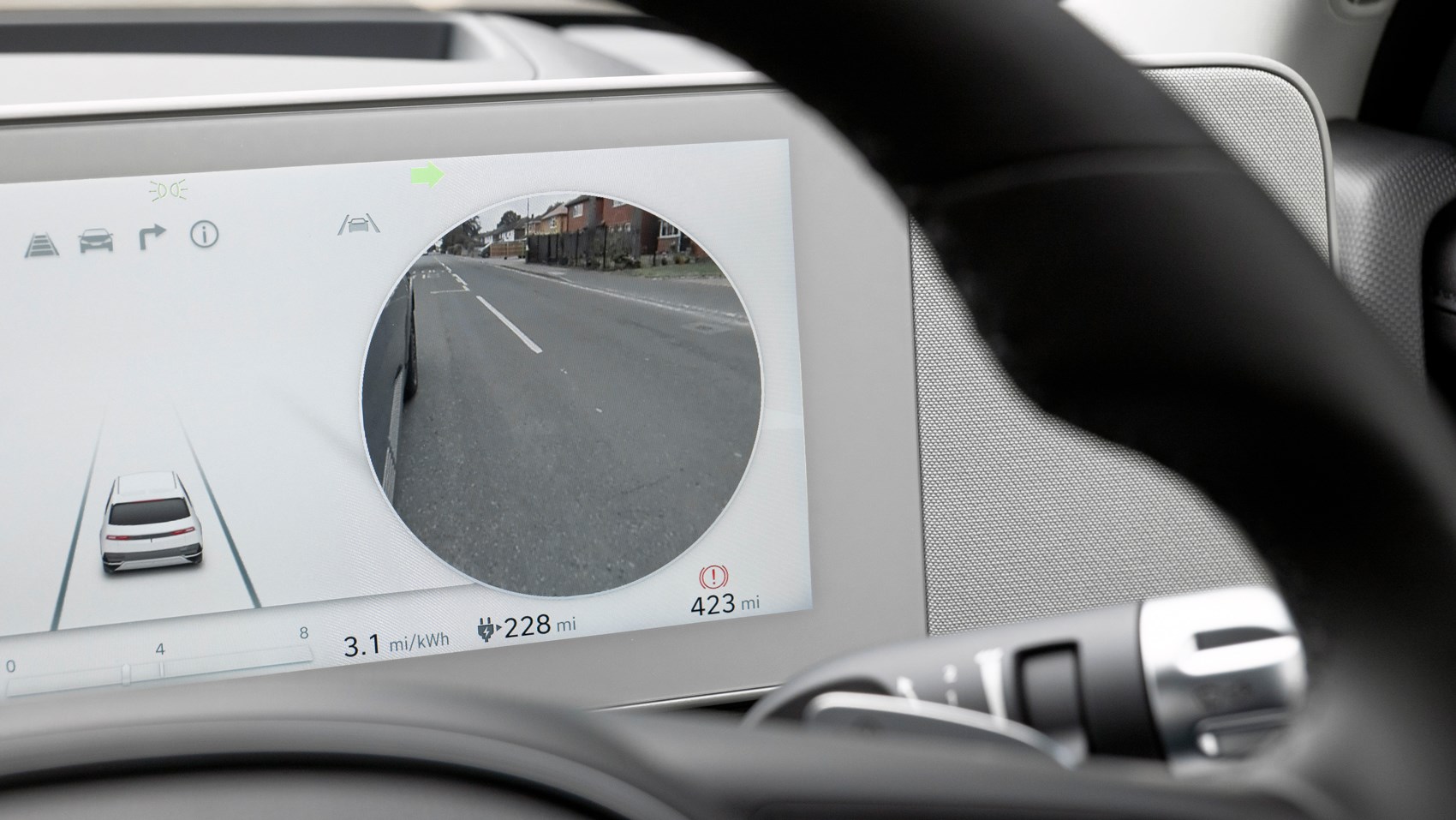
Then there’s all the available tech on board. Along with Level 2.5 semi-autonomous driving kit, you can have Hyundai’s Blind Spot View Monitor (that shows you the view of the door-mirror camera when you flick the indicator, see above), an augmented-reality head-up display and front seats that recline with leg supports like a living room La-Z-Boy for when you’re parked up.
Hyundai’s Blind Spot View Monitor: does it work?
Digital Side Mirrors are offered on the 2023-on model range, as well as a digital centre mirror that should get around the lack of a rear wiper and allow a clear view behind even with occupants in the back seats. We’ve tried the digi cameras on the Namsan Edition (below) and can report they work well, without being too shiny, bright or distracting.

The cameras themselves look space-age and are much bigger than the compact lenses on a Honda E; we would worry about them being damaged when parked up in urban areas. At least they fold in automatically, so they’re less likely to be struck by a passing car.
One of the most compelling features is a Hyundai innovation: the V2L Pack. V2L stands for ‘vehicle to load’ – in the 5’s case, it gives you the ability to use the car as a rolling power bank, allowing you to plug in (via an adaptor on the charging port plug) almost anything externally, like a lawn mower, e-scooter or even another EV. There’s also a three-pin socket under the rear seats as part of the pack so you can charge a computer or camping fridge on the go.
From 2023, the V2L tech is now standard on all models from Premium upwards. All models also receive a new battery heater and conditioning feature to improve charging – it’ll activate to prepare the battery if you enter a high-speed charger into the navigation.
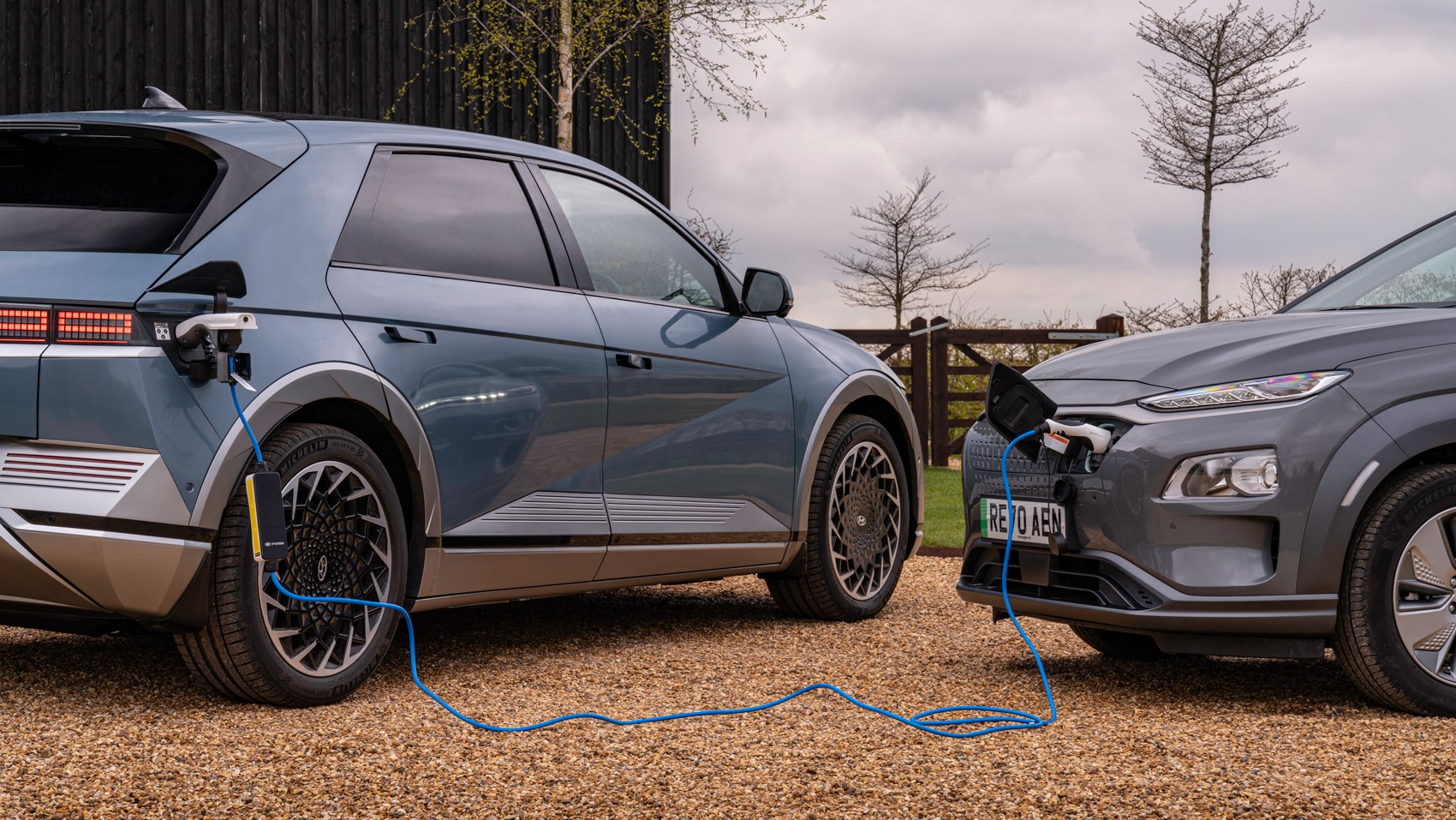
Choose from four spec levels on the Ioniq 5. The earlier SE Connect trim has been quietly dropped for 2023, leaving your choice between:
- Ioniq 5 Premium From £43,150
- Ioniq 5 Ultimate From £49,650
- Ioniq 5 Namsan Edition From £54,150
Optional extras are few and far between. Metallic paint costs £585, a heat pump £995 and the Tech Pack (adding electric memory front seats, parking collision assist and auto-pop-out flush door handles) £995.
Hyundai Ioniq 5 review: what’s it like to drive?
Once you’re rolling, the 5’s interesting details don’t instantly reveal themselves – it feels entirely standard fare for a family EV: quiet, inoffensive and smooth when you’re nipping around town. And properly quick, just like an EV with so much torque should be.
Eco mode dulls the throttle while, at the other end of the scale, the dials glare red in Sport and the throttle response is incredible. It bodes well for the upcoming Ioniq 5 N electric hot hatch, which is likely to boast nearly 600bhp when sales start in 2024.
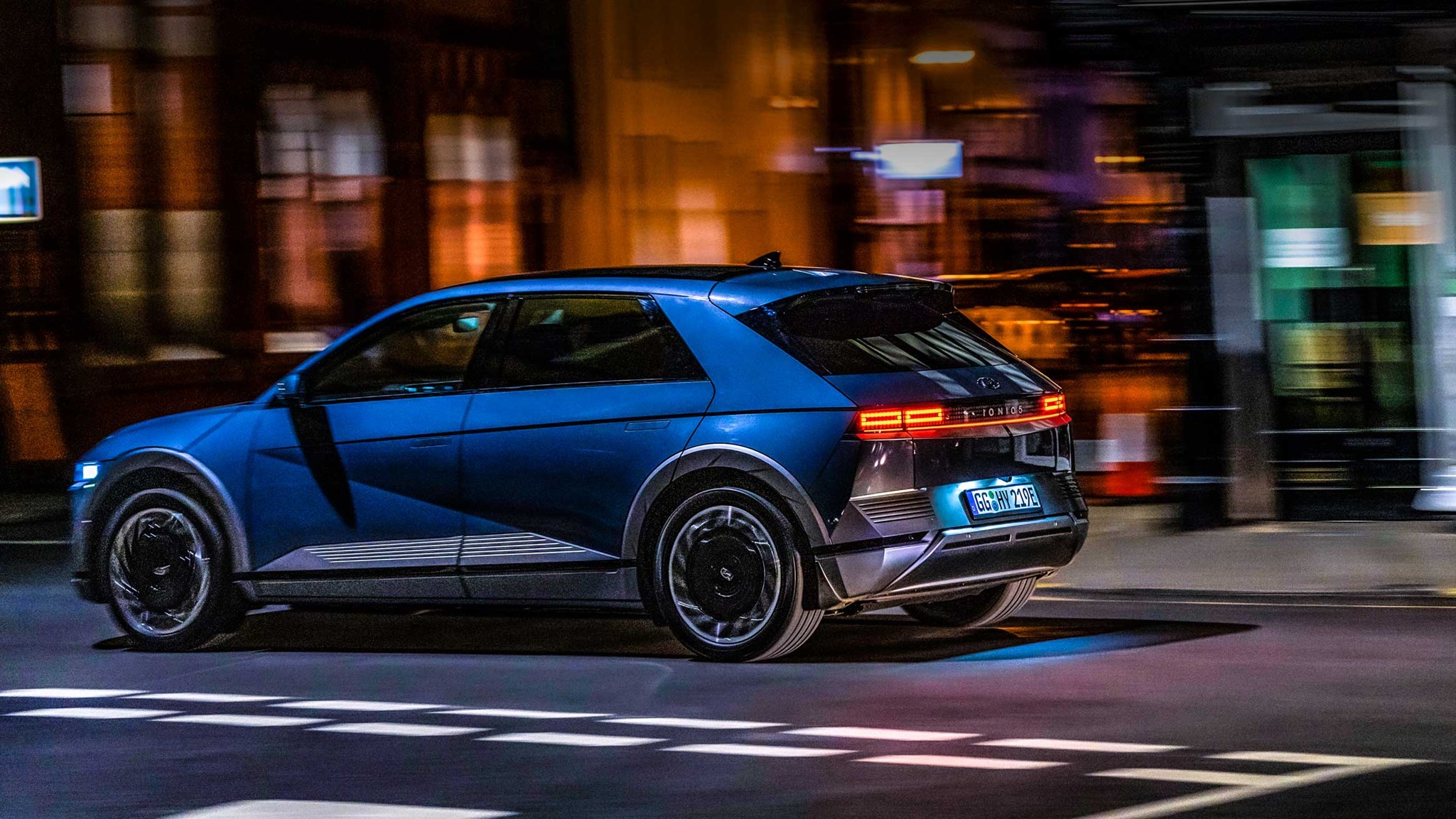
Then you start to notice the finer points after the miles roll on.
The steering, for example, is alert and well-weighted – no dead-spots off-centre and tremendously fluid when you wind the lock off after a turn. The turning circle is tight, too; not London taxi or Honda E tight, but not far off. Then there are the brakes. It’s almost an expectation for an electric car to have a soggy brake pedal and inconsistent feel when you apply some pressure due to regenerative braking (of which Hyundai has four steps, plus a one-pedal mode), but not here. Plenty of solid, accurate feel regardless of regeneration level.
The Hyundai Ioniq 5 is a heavy car at 1.9 tonnes plus and one that majors on comfort. You can hustle it along a back road, if you must, but you’ll always be conscious of that weight. Instead, we recommend easing off, saving your range and entering waft mode – with only occasional forays into that prodigious torque.
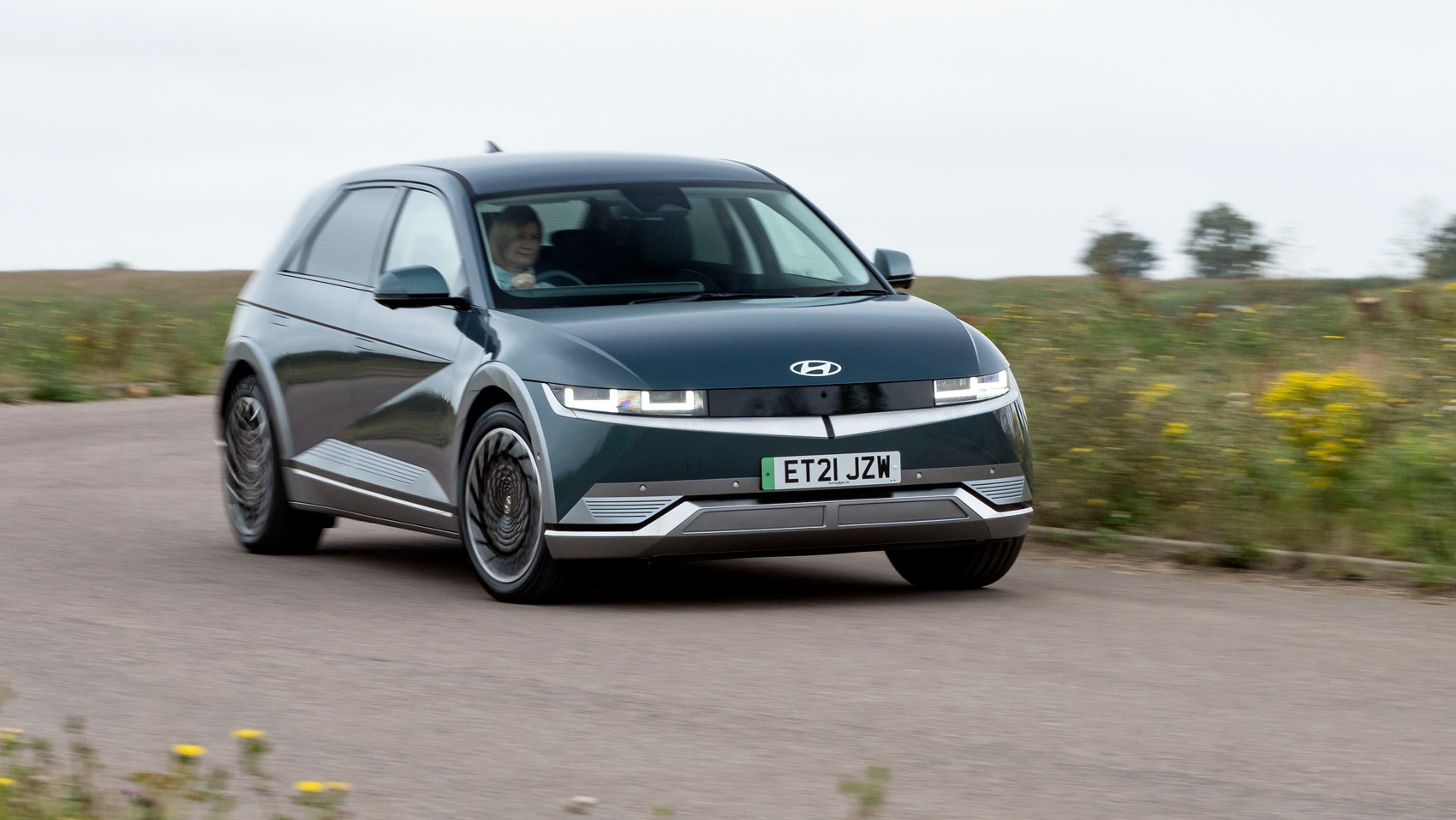
Tyre noise is well within an acceptable level and wind noise is well managed. Couple this with a balanced ride quality – not too jittery, but not waterbed-wallowy either – and it’s a very promising position to be in.
Compared to its Kia brethren, the Hyundai feels looser and more relaxed – and more suitable for everyday driving. Steering is faster on the Ioniq 5 than the Kia, with a lighter feel – and there’s also a more reserved feel to acceleration. It’s a performance car, but less of a sporty GT like the Kia.
Hyundai Ioniq 5: verdict
The Ioniq 5 is an absolute show-stopper to look at, it has a thoroughly usable, spacious and appealing interior brimming with technology and neat tricks, it’s quick and its handling treads a fine balance between sporty and comfortable. We’d recommend a Premium-spec one with the 77kWh battery pack for the most range and a long equipment list.
The Ioniq 5 ought to be towards the top of the list if you’re looking at a family EV. And if your budget allows, consider the Kia EV6 instead. Riffing off the same impressive E-GMP platform, the Kia is the more premium, focused version of the Hyundai – with equally sci-fi looks. Behind the wheel, it offers a more refined experience with a little extra speed, and the interior – while keeping the same broad strokes as the Ioniq 5 – adds a little more tech and a lot more quality.
Specs are for an Ioniq 5 Ultimate 77.4kWh AWD
Read more Hyundai reviews here
View Hyundai Ioniq lease deals